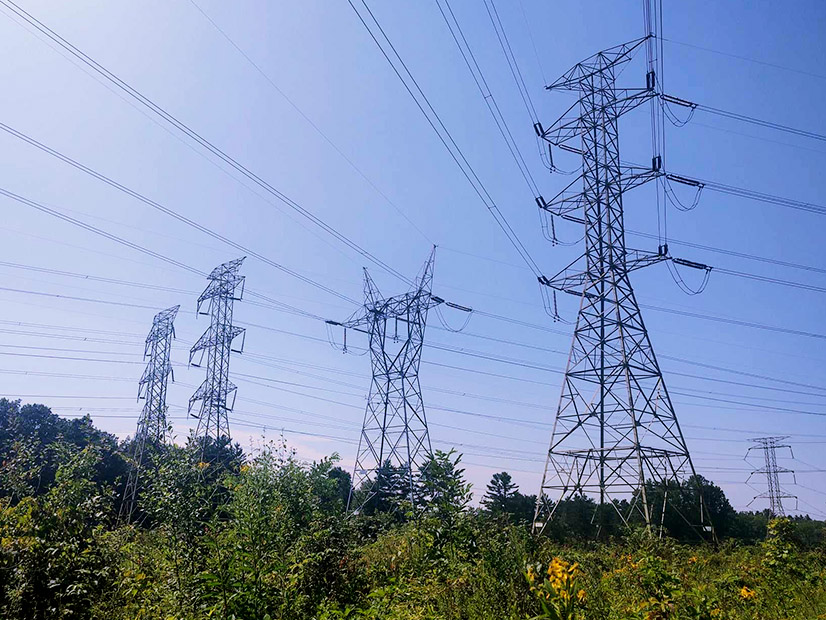Proposed RS1 Carryover for 2025 Increases
Things got a little testy at the NYISO Budget and Priorities Working Group meeting Oct. 2 when Cheryl Hussey, the ISO’s chief financial officer, presented some final updates to the proposed 2025 budget.
Hussey said NYISO was proposing to increase the Rate Schedule 1 carryover to $5 million. In September, Hussey explained that the ISO is expecting a surplus this year because of overcollections under RS1, the administrative rate used to recover operating costs from members. (See NYISO Proposes Increased Budget, Admin Rate for 2025.)
“That’s really the only change to the actual budget itself to date,” said Hussey, who went on to explain that this would reduce the budget to $202 million, a $2 million decrease from what she previously presented. This would result in an RS1 surcharge of $1.306/MWh instead of $1.319/MWh. Hussey said that higher projected overcollections were being used to reduce RS1 instead of paying outstanding debt.
“Can you share your analysis that shows that this is actually in the customers’ best interest to use this money as a one-time carryover rather than paying down debt?” asked Kevin Lang, a lawyer representing Multiple Intervenors and New York City. “We had pushed for paying down debt years ago because we understood at that point in time that that was really the best use of it. … I don’t see any analysis at all. I just see a statement here.”
Hussey said the interest rates NYISO was paying on its debt were quite low and that the numbers were just projections but that if NYISO had extra funds they were able to use them to pay down debt early.
“If stakeholders would rather us not have a carryover to reduce next year’s budget, that’s fine. I’ve asked for that feedback,” Hussey said.
“I’m not asking for that, Cheryl. I’m simply asking for the analysis you guys did,” Lang said. “We’re paying for all of this. You guys aren’t a confidential entity, and you’re saying you’ve done an analysis that shows this is the best use. I’m not saying, ‘Don’t do it.’ I’m simply saying I’d like to see the analysis so we can better understand that.”
Hussey said NYISO would need to review its agreements with its banks to see what information she could share.
Lang replied that he had seen more detailed budgets from other grid operators and suggested that if NYISO wasn’t willing to share more detailed budgetary information, then perhaps it was time to revisit auditing its management.
“I know you’ve been completely opposed” to an audit, Lang said. “But the [New York Public Service Commission] has that authority. The FERC has that authority. Maybe it’s time that we take a closer look at some of these issues.”
Hussey said she was not refusing to share the analysis, but Lang retorted that she had not agreed to provide it, either.
How to Value Transmission Security
The Installed Capacity Working Group meeting Oct. 1 was dominated by a discussion of the different ways that NYISO could incentivize transmission security via the markets.
The Market Monitoring Unit and several stakeholders have raised concerns about how transmission security requirements are incorporated into the ICAP market at minimum levels. The worry is that the current market structure does not correctly incentivize or value transmission security, leading to repeated regulatory and public policy interventions to build out the transmission system. (See “Demand Curve Reset and Transmission Security,” NYISO ICAP Working Group Briefs: Sept. 24, 2024.)
But how to value transmission security is an open question.
“We would have separate requirements, curves and accreditation for resource adequacy and transmission security, priced separately,” said Manish Sainani, NYISO market design specialist, outlining the Monitor’s proposal.
“You’ve just described something that’s drastically more complicated than having separate requirements and doing a joint solving program,” said Mark Younger, principal of Hudson Energy Economics. “It seems what you’re proposing is an even bigger kludge than what we have in the market today.”
Later in the discussion, NYISO clarified that its presentation was just trying to identify potential options but that none of them had been decided on yet.
“It seems like one of the first things we should try to nail down is the methodologies for calculating TSLs [transmission security limits] and [locational capacity requirements]; that’s been underway for a while,” said Mike Mager, a lawyer from Couch White representing large energy consumers. “I don’t think it makes a ton of sense to change the market for TSLs when we’re not even positive what the methodology is for calculating them.”
Monitor Pallas LeeVanSchaick said TSLs are having a major impact on the market.
“It’s having a big impact today, and it’s going to have a bigger impact in the future,” he said. “I think our proposal was just trying to make a refinement to the market so that it is having an appropriate impact.”



